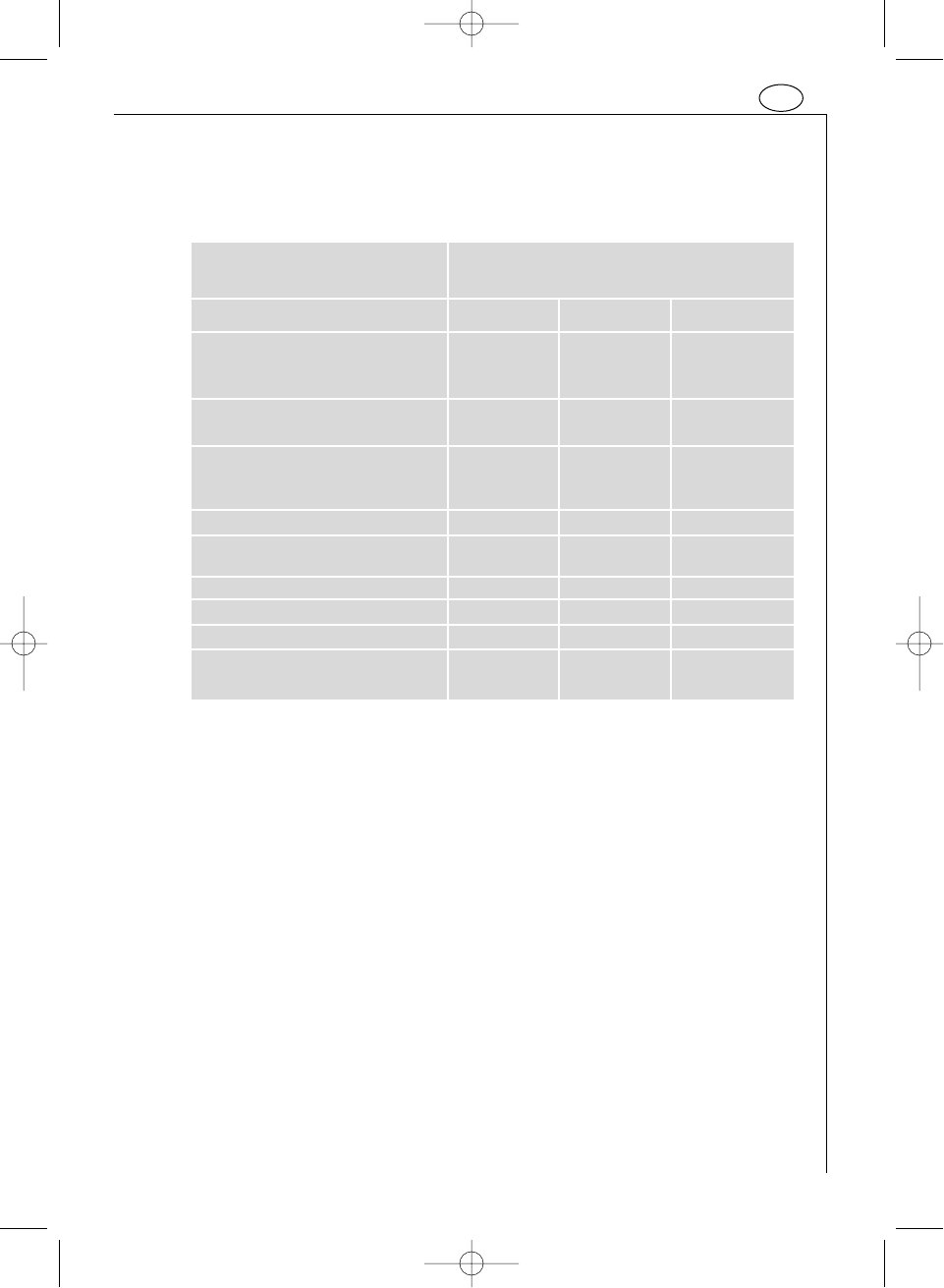
7
UK
3 General operating instructions
Suitable ovenware
X suitable - non suitable
1
) excluding silver, gold, platinum or metal decoration
2
) does not include glaze containing metal
3
) please note the maximum temperature stated by the manufacturer
Ovenware material Mode of operation
Defrosting Heating Cooking
Ovenproof glass and ceramic
dishes (without any metal parts, X X X
e.g. Pyrex, Oven-to-tableware)
Non ovenproof glass and porcelain X - -
(e.g. table crockery)
1)
Glass ceramic and vitro-ceramic X X X
made of fire/frost proof material
(e.g. Arcoflam)
Ovenproof earthenware
2)
X X X
Plastic, heat-resistant up to X X X
200°C
3)
Paper, cardboard X - -
Cling film X - -
Microwave cling film
3)
X X X
Black-lacquered or silicone-coated - - -
baking tins
What else to note...
· Food comes in all shapes, sizes and textures. The quantities also vary. For
these reasons the time and amount of energy needed to defrost, heat or cook
will also vary. As a general rule :
Double the quantity/weight = nearly* double the time
* Please refer to the cooking charts. To be on the safe side, always select the
shorter cooking time. Then extend the time as necessary.
· Microwaves work by making the food heat itself up. Because of this, not all
areas of the food will be heated at the same time. When heating larger
quantities of food, it is particularly important to stir or turn them over.
· “Standing time” is referred to in the cooking charts. This is the time you
should leave the food to stand without power (either inside or outside the
appliance). This ensures even distribution of heat throughout the food.
3
MC 153 E UK,Plug 25/10/99 1:16 pm Page 7


















